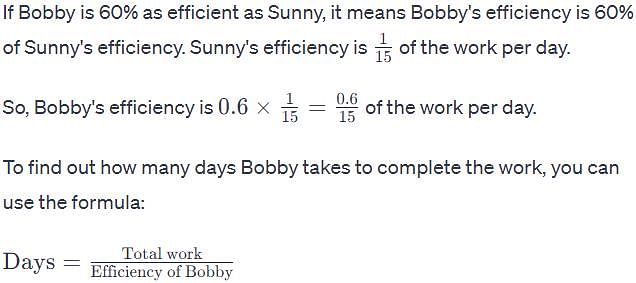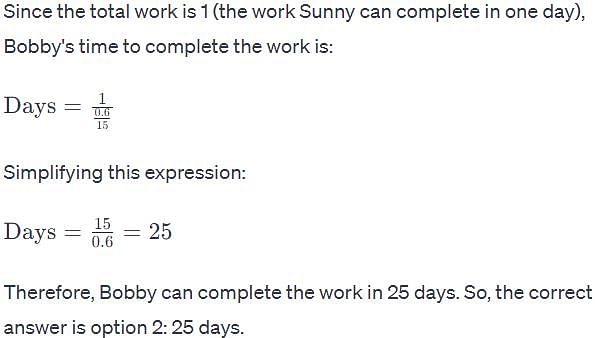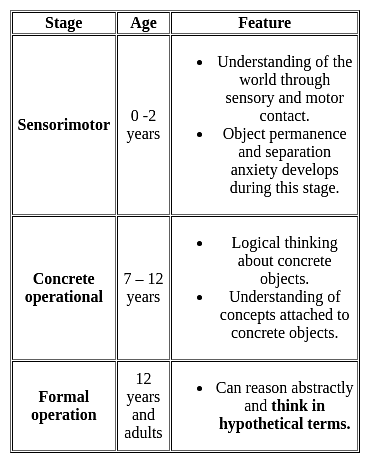DSSSB PRT Mock Test - 8 - DSSSB TGT/PGT/PRT MCQ
30 Questions MCQ Test - DSSSB PRT Mock Test - 8
Three out of the four alternatives are same in a certain way and so form a group. Find the odd one that does not belong to the group.
", provide a multiple-choice question related to the impacts of the Green Revolution.
| 1 Crore+ students have signed up on EduRev. Have you? Download the App |
Who is associated with the creation of the architectural wonder "Qutub Minar"?
At which company did the Prime Minister inaugurate India's first automobile in-plant railway siding?
Which district of the Andaman and Nicobar Islands receives the highest amount of rainfall?
According to Graham's law of effusion, the rate of effusion of a gas is inversely proportional to its:
The average of X natural numbers is 32. If 8 is added to the first number and 40 is subtracted from the last number, the average becomes 30. What is the value of X?
Sunny can complete a work in 15 days. If Bobby is 60% as efficient as Sunny, in how many days can Bobby complete the work?
In the figure below, PQ = QS, QR = RS and angle SRQ = 100°. How many degrees is angle QPS?

The Sabarmati Express left Ahmedabad for Mumbai. Having travelled 300 km, which constitutes 66.666 per cent of the distance between Ahmedabad and Mumbai, the train was stopped by a red signal. Half an hour later, the track was cleared and the engine-driver, having increased the speedby 15 km per hour, arrived at Mumbai on time. Find the initial speed of the Sabarmati Express.
In a class there are 20 boys and 15 girls. The ratio of boys to girls is:
Direction: A word in capital letters is followed by four words. Choose the word that is most nearly opposite in meaning to the word given in capital letters.
EQUIVOCAL
Directions: In the given sentence, an idiom or phrase is missing. Choose the phrase/idiom that can fill the blank both grammatically and contextually.
He is really _______________ who requires evidence and supporting documents to believe something.
Directions: Read the passage and answer the following question.
The Digital Transformation (DT) has redefined the way we live and interact with the world. This phenomenon refers to the integration of digital technology into all areas of human life, fundamentally altering how we operate and deliver value. DT is not just about technology; it is also about how we evolve and adapt to the changing cultural landscape brought about by these technological advancements.
At the core of DT is the concept of 'disruption.' Industries that once seemed impervious to change are now being reshaped by innovative digital solutions. For instance, the advent of ride-sharing apps has disrupted the traditional taxi industry, while streaming services have upended the entertainment and media sectors. These disruptions are not merely technological; they fundamentally alter market dynamics, customer expectations, and the very nature of products and services.
Another critical aspect of DT is the emphasis on data. In today's digital ecosystem, data is the new oil. It is the raw material that drives decision-making, product development, and customer experience. Businesses that harness the power of big data and analytics have a competitive edge, as they can gain deeper insights into customer behavior and market trends.
However, DT also poses significant challenges. The digital divide, for instance, is a pressing concern. As technology becomes more ingrained in our lives, those without access to digital tools and literacy are increasingly left behind. Additionally, privacy and cybersecurity are becoming paramount as more personal and sensitive information is stored and processed online.
Q. What challenge of Digital Transformation is highlighted in the passage?
Most of the teaching aids prepared for the lesson are used during this step.
Given below are two statements:
Statement I: The ability to form and use symbols are accomplished in the preoperational period.
Statement II: According to Piaget, preoperational children do not have a tendency to be egocentric.
In light of the above statements, choose the most appropriate answer from the options given below:
Assertion (A): A teacher tries to include examples from the immediate environment of children to make the classes interactive.
Reason (R): Socio-cultural context plays an important role in learning.
Choose the correct option.





















